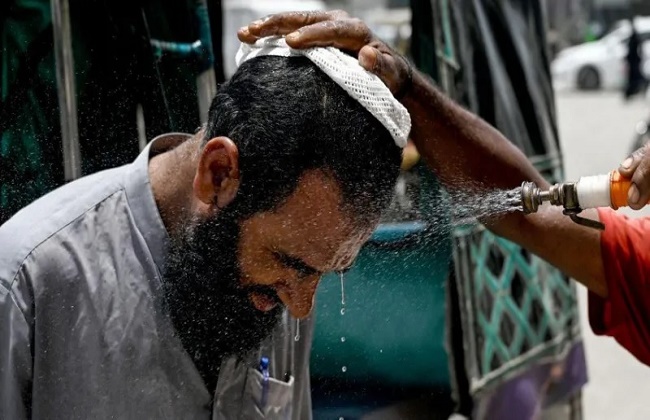
At least 568 people have died of suspected heat-related causes in Pakistan over the last six days. The heatwave roasting Karachi is expected to last into next week, albeit with slightly lower temperatures forecast. The Edhi ambulance service collected 141 bodies on Tuesday, as it usually takes around 30 to 40 people to the Karachi city mortuary daily. The rising numbers of dead came as temperatures in Karachi soared above 40 °C (104 °F), with the high humidity making it feel as hot as 49 °C, reports BBC. Civil Hospital Karachi admitted 267 people with heatstroke between Sunday and Wednesday, said Dr Imran Sarwar Sheikh, head of the emergency department. Twelve of them died. “Most of the people who we saw coming into the hospital were in their 60s or 70s, although there were some around 45 and even a couple in their 20s,” said Dr Sheikh.
“Many of those we saw had been working outside. We’ve told them to make sure they drink plenty of water and wear light clothes in these high temperatures.” The high temperatures—described as a “partial heatwave” by one meteorologist—began at the weekend.
Heatwave centres and camps were set up to try to provide relief to the public. Pictures show children playing in fountains as they tried to cool off.
Meanwhile, across the border in India, the capital Delhi has been enduring an “unprecedented” heatwave, with daily temperatures crossing 40 °C (104 °F) since May, peaking at nearly 50 °C. Doctors in the city say they’ve never seen anything like it before. For Karachi resident Mohammad Zeshan, it is clear what the problem is.
“This is due to climate change,” he told Reuters. “This is happening all around the world. This is happening in Europe. They have faced intense heat but they have taken steps about it. “But here, it is sad that government has not taken any effective measures.”
Experts agree these sorts of extreme weather events are becoming more frequent and intense as a result of climate change. The heatwave roasting Karachi is expected to last into next week, albeit with slightly lower temperatures forecast. Weather experts are now turning their attention to the monsoon season, which is expected to arrive early and bring as much as 60% more rain.
